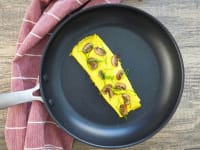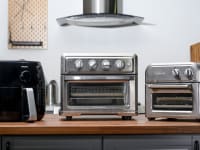Japanese souffle pancakes are everywhere—here's how to make them
These fluffy, pretty pancakes are just a few egg whites away.
Products are chosen independently by our editors. Purchases made through our links may earn us a commission.
While classic American diner pancakes are still a mainstay of our brunch experience, their Japanese cousin—fluffy in texture and jiggly in action—have recently attracted a cult following all over the world. Whether you’ve seen them in viral videos or across your Instagram feed, these perfectly rounded, sky-high soufflé pancakes have probably caught your attention.
After some investigation, I discovered that these pancakes use the same basic ingredients as an American short stack: flour, milk, and eggs. The eggs are separated and the whites whipped, creating a meringue that gives the pancakes their volume. This information left me reeling—did this mean I wouldn’t have to go out for brunch anymore?
Motivated and hungry, I began experimenting with ingredient ratios and timing to achieve perfectly fluffy pancakes. After a few failed attempts, I settled on this recipe for delicate, pillowy pancakes that might trick you into thinking you’re chewing on clouds.
The main ingredient for success is patience. When food bloggers and chefs write “whip the egg whites until stiff peaks form,” they’re dead serious about the stiffness. But give these pancakes your time, and they won't disappoint you.
What makes soufflé pancakes so fluffy?
These Japanese pancakes are tall in appearance and soft in texture. The airiness of the pancakes comes from the addition of meringue, which contains air bubbles and acid that hold their structure inside the batter. The key to whipping up a perfect bowl of meringue is a reliable stand mixer.
As someone who tried to whip up meringue with a hand-mixer in her humid kitchen one summer, I wouldn't recommend it. Frankly, a stand mixer is a necessary tool when it comes to serious baking—it can make the most complicated task feel like a breeze.
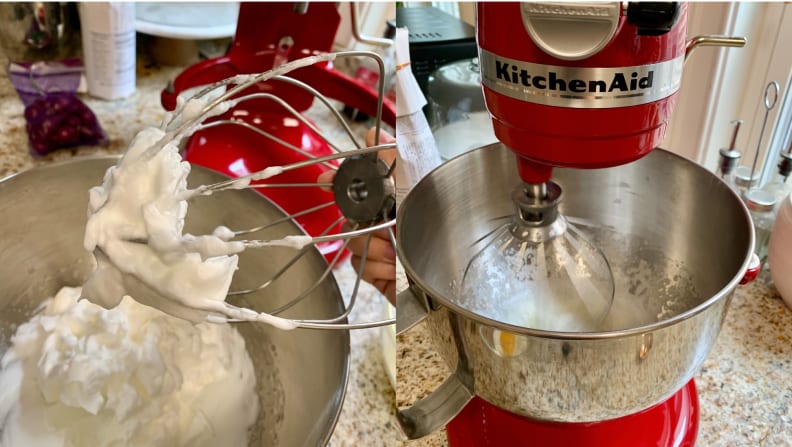
Our favorite stand mixer can quickly whip up stiff meringue.
In addition to having a solid stand mixer at the ready, it's important to prepare your ingredients before you begin whipping up your pancakes. Let the eggs sit at room temperature for at least half an hour before cracking them. From my previous attempts, I can attest that chilled egg whites simply won't produce as much volume as room temperature ones.
Be sure not to skip the addition of cream of tartar, because the acid acts as a stabilizer that ensures the meringue will hold its shape when cooking on a hot griddle. Fresh eggs will also be more stable in their structure than old ones.
Ingredients at the ready? Now it's time to get cracking.
Recipe: Japanese Soufflé Pancakes (Serves 2)
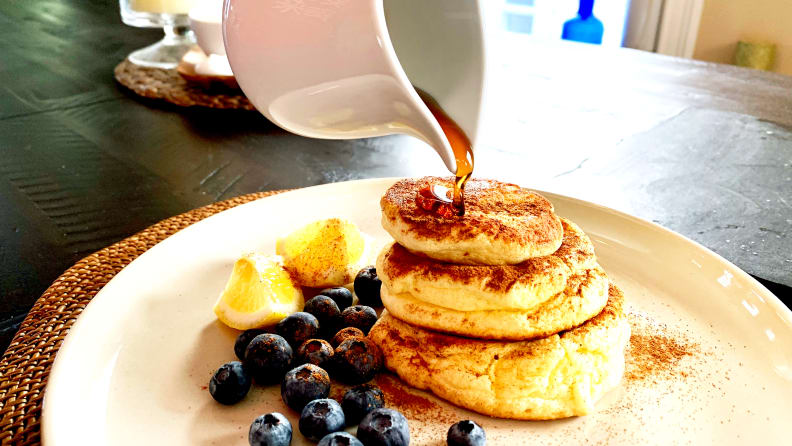
This recipe guarantees the perfectly fluffy Japanese souffle pancakes.
What You'll Need:
- A stand mixer, like the KitchenAid Artisan
- A whisk
- Two large mixing bowls
- Measuring spoons
- A baking spatula, for mixing
- A cooking spatula, for flipping
- A griddle, or a flat-bottomed pan
- A pastry bag
- 4 eggs, separated
- 1 tbsp cream of tartar (substitution: lemon juice or white vinegar)
- ½ cup confectioner’s sugar
- ¼ cup whole milk
- 6 tbsp flour
- 2 tbsp vegetable oil
- 1 tsp vanilla extract
- 1 tbsp butter, for greasing
Time Needed
45 minutes
Difficulty
Medium
Step-by-Step:
1. Make the meringue
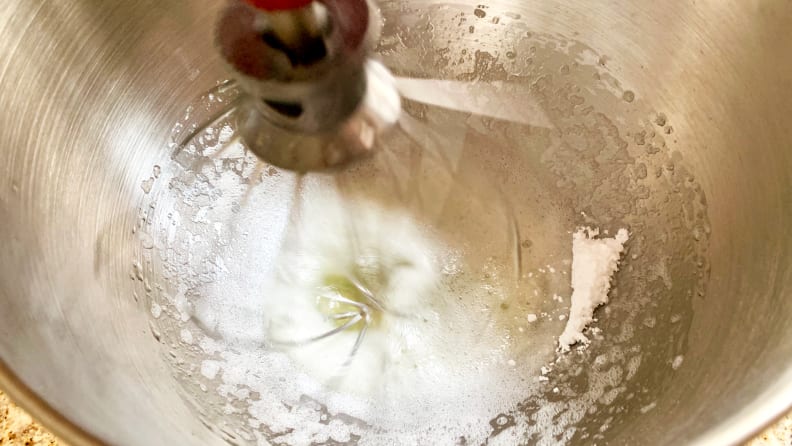
Add the confectioner's sugar when the egg whites are frothy.
In a large bowl, separate the egg yolks from the egg whites. Put the egg whites in the stand mixer bowl, then add cream of tartar. Start the stand mixer at low speed. Stop the machine when the egg white mix turns frothy, then add the confectioner’s sugar. Turn it back on at its highest speed until the egg whites form stiff peaks. Stop the machine, take out the bowl and flip it upside down to check if the meringue is stiff enough.
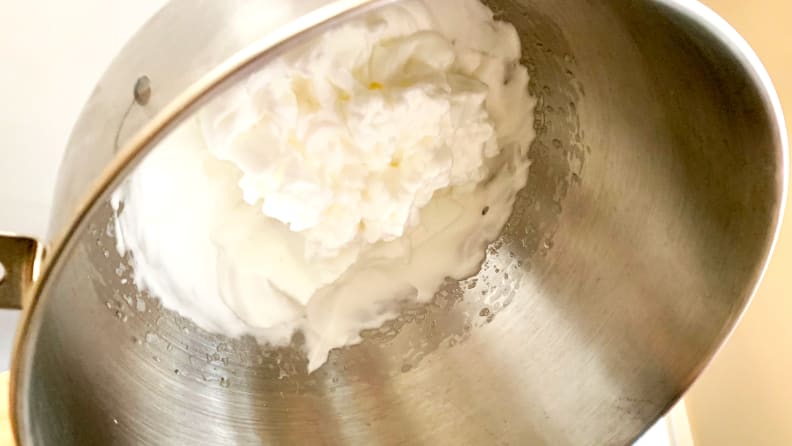
You should be able to flip the bowl upside down without the meringue falling out.
2. Mix the pancake batter
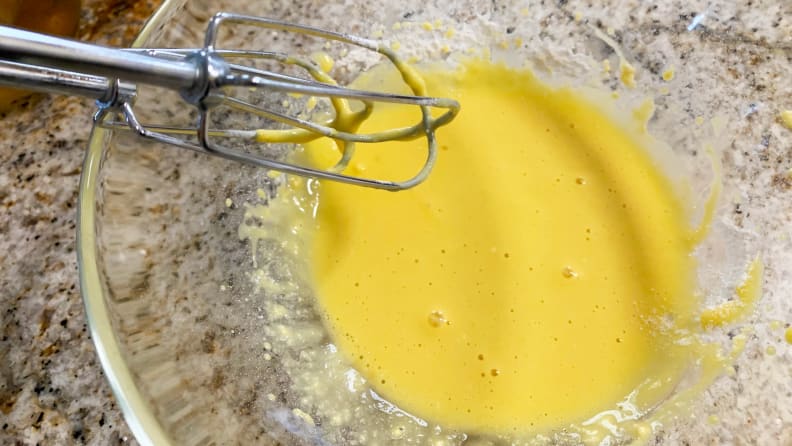
Pay attention to the batter consistency while whisking.
In a different bowl, add the egg yolk, vanilla extract, milk, and vegetable oil. Whisk until well-incorporated—you can also use a hand mixer if necessary. When everything is mixed, add the flour and keep whisking until the batter achieves a syrup-like consistency.
3. Fold the meringue into your pancake batter
This is the most important step in order to make your pancakes jiggly. Use a baking spatula to take out one scoop of the meringue and dump it in the batter. Gently fold together until you don’t see any white bits in the batter. Then, fold the remaining meringue, one heaping spoonful at a time, into the batter mix. Repeat the motion until the egg whites and the batter have been well-incorporated but not overly mixed.
4. Cook your pancakes over low heat
Let the griddle sit on the lowest heat possible and grease the surface with butter. Using the baking spatula, scoop out the batter and place it in a pastry bag. Cut a half inch hole on the bottom of the pastry bag and carefully squeeze out the amount of batter required in a spiral motion to make your desired size of pancakes onto the griddle.
Wait a minute to let them stabilize, then top off the existing pancakes with another round of squeezing until you reach your desired pancake height. Make a dome-shape tinfoil cover and place over the griddle or pan—this will help your pancakes rise. Let them cook over low heat for 10 minutes.
5. Flip the pancakes
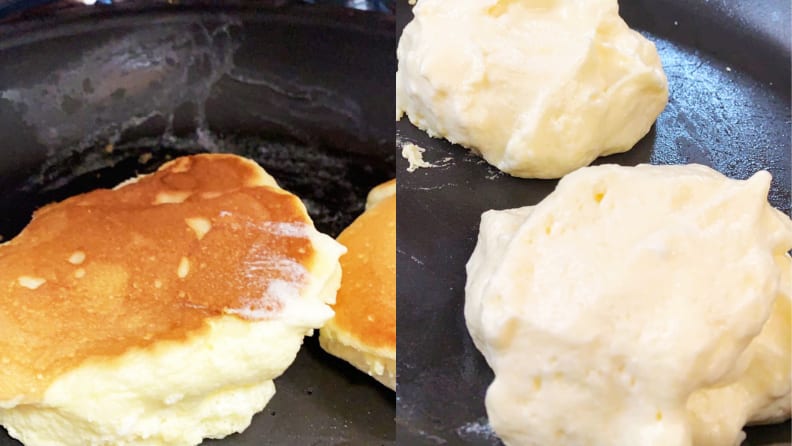
Let the pancakes slowly cook until both sides are golden brown.
After 10 minutes, remove the tinfoil and check the doneness of the pancakes. Use a cooking spatula to gently lift up the bottom of one—if the bottom is golden-brown and you can lift it off the griddle smoothly, that means your pancakes are half-way there. Then, just as you would with regular pancakes, flip them and let the other side cook for about seven minutes.
6. Prepare and serve
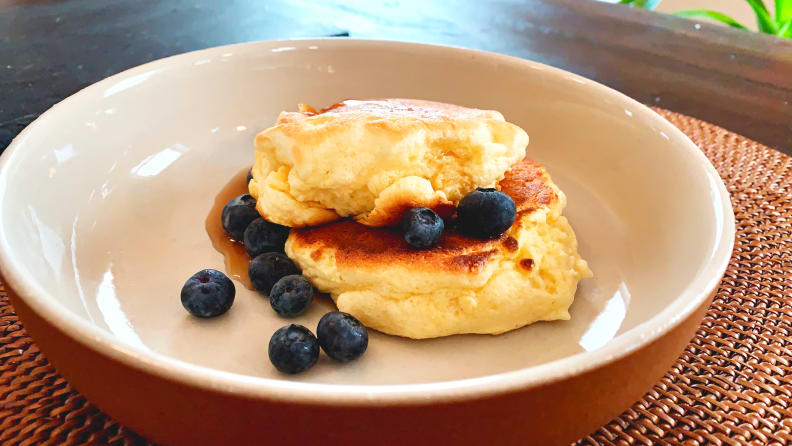
Serve the pancakes hot with anything you want.
The perfect soufflé pancakes should be golden-brown on both sides and airy and fluffy in the middle. Serve with maple syrup, a dollop of ice cream, or confectioner’s sugar and fresh fruit—basically anything you want. These pancakes are most jiggly fresh off the griddle, so serve them while they’re hot—not that anyone would want to wait.
Prices are accurate at the time this article was published, but may change over time.

